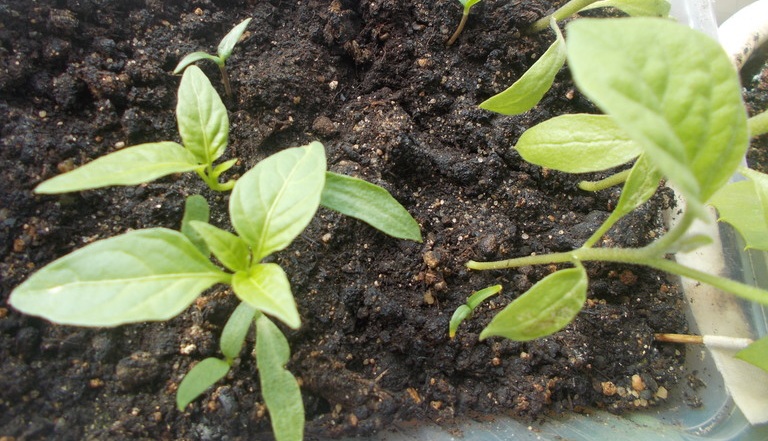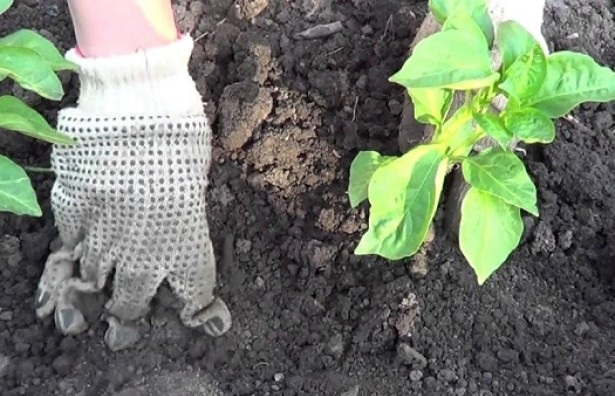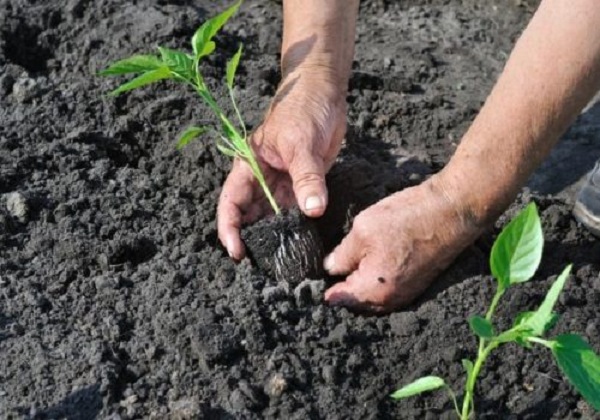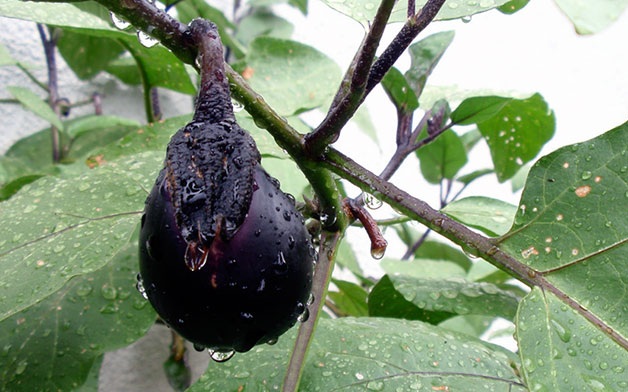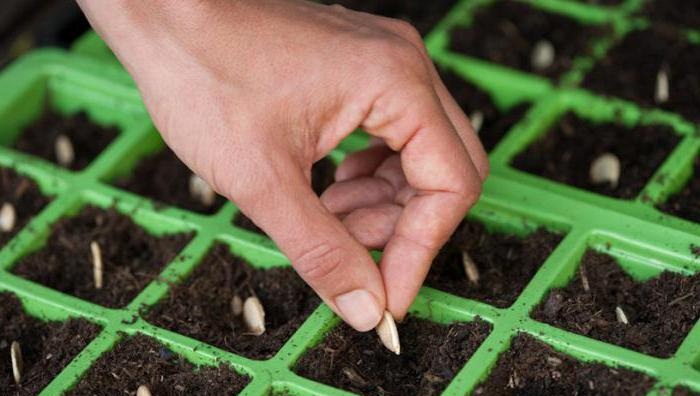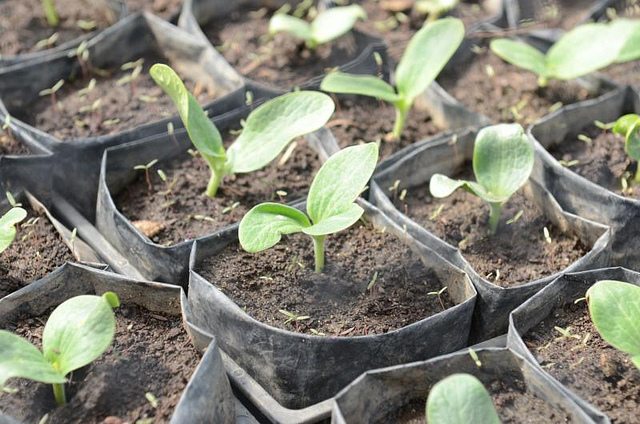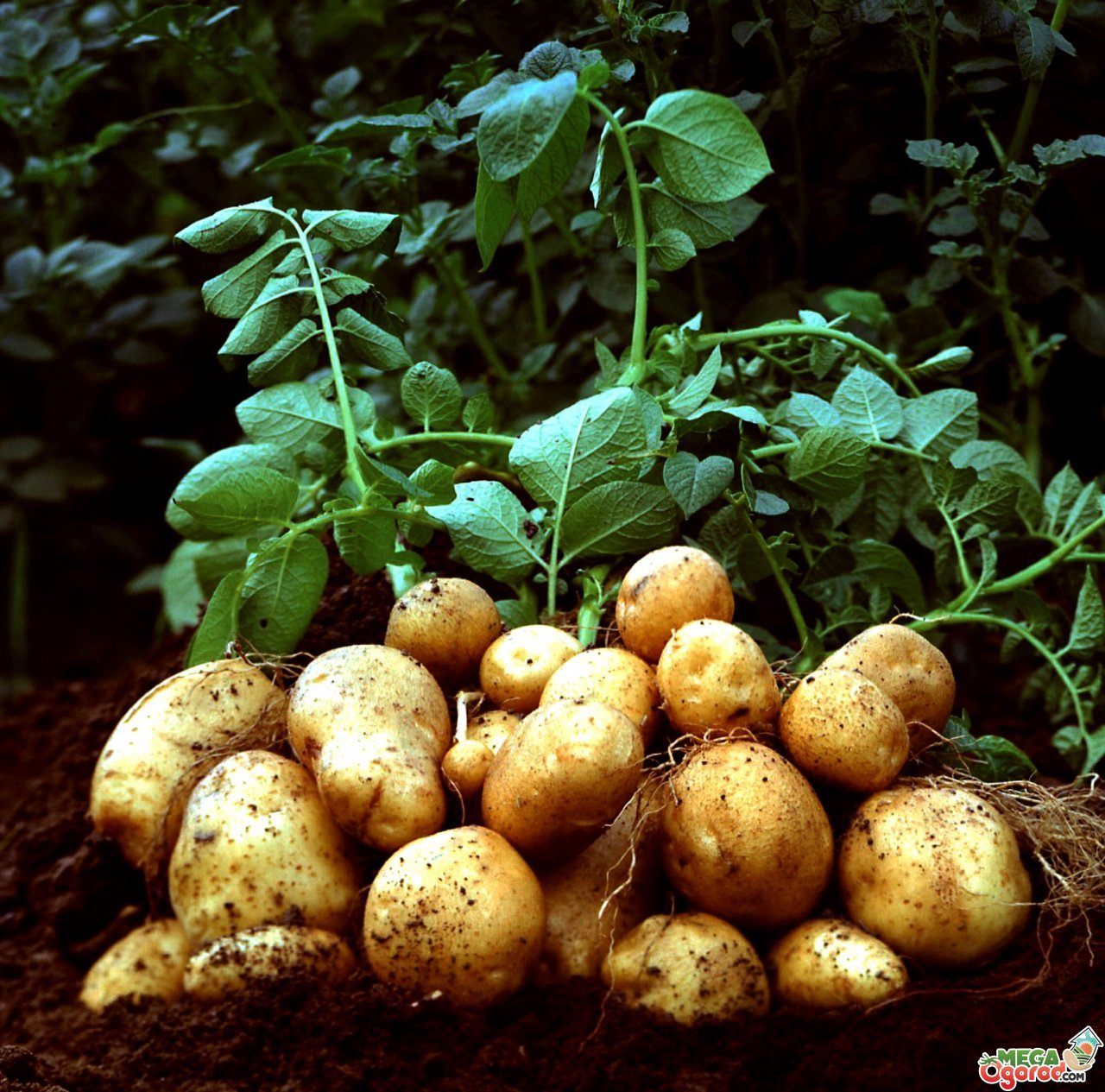Content:
The homeland of eggplants is India and other countries of southern Asia, therefore this plant is very thermophilic, and also depends on the level of moisture in the soil and the environment. If the growing conditions are not suitable for the "blue" ones, they immediately slow down their growth, start to get sick, so many gardeners consider the vegetable the most capricious.
In most of our country, in spring, weather conditions are unstable: often warm weather is abruptly replaced by a cold snap and vice versa. Therefore, planting eggplants in open ground with seeds in such regions is risky, since you can not wait for shoots, or young plants will freeze and die. In this regard, eggplants are planted in open ground only with seedlings, purchased or grown at home.
But it is not enough to grow strong and healthy seedlings, it is important to send them on time to a permanent pre-prepared place and in the future to create all conditions for the bushes of this vegetable crop to actively grow, ovaries appear and "blue" ones ripen.
How to plant eggplants in open ground with seedlings
First you need to decide on the varieties of eggplants that will be grown on the site. The choice depends on the climatic conditions in the region, the duration of the warm period. In the southern regions, you can grow both early types of this vegetable crop, and later in terms of ripening. And in the conditions of the Black Earth Region, the middle zone or the Ural region, it is better to select only early varieties so that the "blue" ones have time to ripen in a short summer.
The timing of planting the selected varieties for seedlings depends on the maturation period of the selected plant varieties. If hybrids and varieties of eggplants are harvested a couple of months after planting the seeds, then such seedlings can be sown for seedlings in the last decade of April, so that healthy seedlings can be planted in a permanent place in the last days of May - early June. And with a ripening period of 3-3.5 months for seedlings, such seeds are sown in the last decade of March - the first half of April.
Before planting, the seed must be germinated so that sprouts appear faster. For this you need:
- Place the seeds in a weak solution of potassium permanganate for disinfection (for 15-25 minutes).
- Transfer to a damp cloth.
- The fabric is wrapped in polyethylene and put away in a warm place.
- When the seeds hatch, you can plant them in containers.
But some vegetable growers first plant all the seed material in a large container, and then (at the stage of 3-4 true leaves) dive into separate cups. When diving, those roots that are too elongated are pinched. This procedure helps the seedlings to better endure the acclimatization process.
You can buy a nutrient mixture at a specialty store or prepare it yourself at home. To do this, mix in equal parts the soil from the garden, high moor peat, coarse sand and rotted compost. Mineral fertilizers are added to such a substrate, mixed thoroughly and laid out in containers.
In each glass, 2 seeds are buried 0.5-1 cm, then watered and covered with polyethylene or glass and placed in a warm place. After emergence, seedlings should be placed in a sunny place. You can open the film after all the seedlings have appeared.
So that the seedlings do not stretch, they must have enough light. Normal daylight hours for eggplants are at least 11 hours. In order for the foliage to have enough light, various reflective surfaces can be placed around the plants. If necessary, the sprouts should be supplemented with fluorescent lamps.
While the sprouts are small, they need to be watered once every 3-4 days, but as the seedlings grow, it needs more moisture in the soil, so watering is increased to once every 1-2 days.
12-14 days before transplanting grown seedlings to a permanent place, they need to be hardened. To do this, containers with plants are taken out into fresh air, first for 0.5 hours, gradually increasing the time spent outside. Such a measure will allow the seedlings to get used to outdoor conditions, the plants will become stronger and easier to transfer transplantation.
The place for transplanting seedlings of this vegetable crop should be well-lit and fertile. To prevent eggplants from being shaded by other vegetables, it is better to plant onions, carrots or herbs nearby. Do not forget about the rules of crop rotation: in one place, any plants from the nightshade family can be planted once every 3 seasons. It is best to plant this vegetable after legumes, watermelons, melons, onions, carrots, cruciferous vegetables.
When to plant eggplants
The specific dates when it is necessary to plant eggplants in open ground on the territory of our country is difficult to name because of the strong difference in climatic conditions. Planting seedlings in a permanent place should be, taking into account the following rules:
- choose favorable days according to the lunar calendar;
- the best temperature regime at which the bushes of these vegetables begin to bloom and form ovaries is 21 ° C;
- seedlings are very thermophilic, therefore even a short-term strong drop in temperature will be fatal for them.
It is not worth rushing to transplant seedlings to a permanent place: during unstable spring weather, eggplants will not grow and develop, and with a strong cold snap they may die. But you shouldn't overexpose these plants at home either. The main thing is to carry out this procedure before the buds appear on the bushes. If flowering plants have to be transplanted into open ground, then you need to prepare for the fact that they will acclimate longer in a new place, the ovaries may fall off, and the plant itself will weaken and may suffer from pathological microorganisms.
Depending on the weather in the region, the dates of disembarkation in open ground can begin in the second decade of May and end in the second half of June.
How to properly plant eggplant seedlings in open ground
The soil in the garden should be the same in composition as the soil in which the eggplant seedlings were grown. If the soil is depleted, then it is better to add organic matter to it - rotted compost fertilizer or mullein infusion. The acidity of the soil should be neutral or slightly alkaline. If the soil is too acidic, then lime or dolomite flour is added to it during the autumn digging.
How to plant eggplants in open ground with seedlings so that the plants acclimatize faster and get sick less?
In 60 minutesthe beds must be watered before transplanting. Seedlings in peat cups are planted together with the container, it will gradually decompose and serve as an additional fertilizer for plants. Seedlings are removed from plastic containers carefully, trying not to damage the clod of earth.
The seeding depth of eggplant seedlings should be such that the cotyledon leaves are immersed in the ground. The soil around the bushes is compacted, while watering should not be done.
Spring in some regions may not be too warm (for example, in the middle lane or Siberia), therefore, in such regions, seedlings should be planted in warm beds, and a plastic wrap should be pulled on top to protect the plants from a night cold snap. The greenhouse should be cleaned after nighttime temperatures of at least 16 ° C are set in the region.
Landing scheme
The bushes of this vegetable crop love space, a lot of light and moist soil, so they cannot be planted close to each other. Although some novice vegetable growers are interested in whether it is possible to plant 2 eggplants in one hole. The answer is unequivocal - no. If the planted varieties are undersized, then 1 sq. m beds can be planted no more than 4 pieces of seedlings. The rate of planting tall eggplant bushes is 2-3 plants per 1 sq. m. A smaller distance between these vegetables should not be done, as it can damage the normal development of bushes and provoke the development of diseases.
Gardening tips for further care
Vegetable growers who have been growing eggplants for many seasons are always willing to share their experience, in particular, how to plant eggplant seedlings in the ground, what proper care these plants need after acclimatization in a new place.
As follows from the recommendations, further care for the planted seedlings consists in carrying out regular watering, loosening the soil with the removal of weeds and applying fertilizers:
- watering regime before flowering bushes - once a week. If the weather is hot and dry, then the frequency of watering should be increased;
- when the eggplants begin to bloom and enter the season of fruiting, they are watered once every 3-4 days. If vegetable growers do not have the opportunity to water as often, then the amount of water increases when watering once a week;
- the rate of water consumption per plant is 3-4 liters, deep penetration of moisture into the soil contributes to better growth and development of the root system;
- watering is carried out in the evening hours under the base of the plant, trying to prevent moisture drops from falling on the large leaves of eggplant;
- water should be preheated to a temperature of 24-26 ° С;
- loosen the soil and remove weeds if necessary, but at least 4-5 times during the summer season;
- fertilizers should be applied under the vegetable plant once every 12-14 days, alternating feeding with organic matter (slurry) and a special complex of mineral additives.
Cultivation and technology for increasing yields
As you can see, summer residents have to work hard to grow eggplants to get a good harvest. It is necessary to select varieties that are regionalized for a specific region, try to grow strong and strong seedlings that will quickly adapt after transplanting to the beds, and also do not forget to feed the plants at all stages of their growth and development.
When selecting varieties, you need to carefully read the annotation on the seed bags, choosing varieties that are sufficiently resistant to major diseases, since pathogenic microorganisms weaken the eggplant, resulting in a decrease in crop yield.
You also need to ensure that the leaves do not infect pests, the most dangerous of which is the Colorado potato beetle.He is incredibly gluttonous, capable of eating an eggplant plantation in a matter of days. Therefore, you need to check plants for insects every day. Although there are currently many drugs available to combat this parasite, many growers argue that the best method to control the Colorado potato beetle is to regularly strip it from the plants and burn it.

